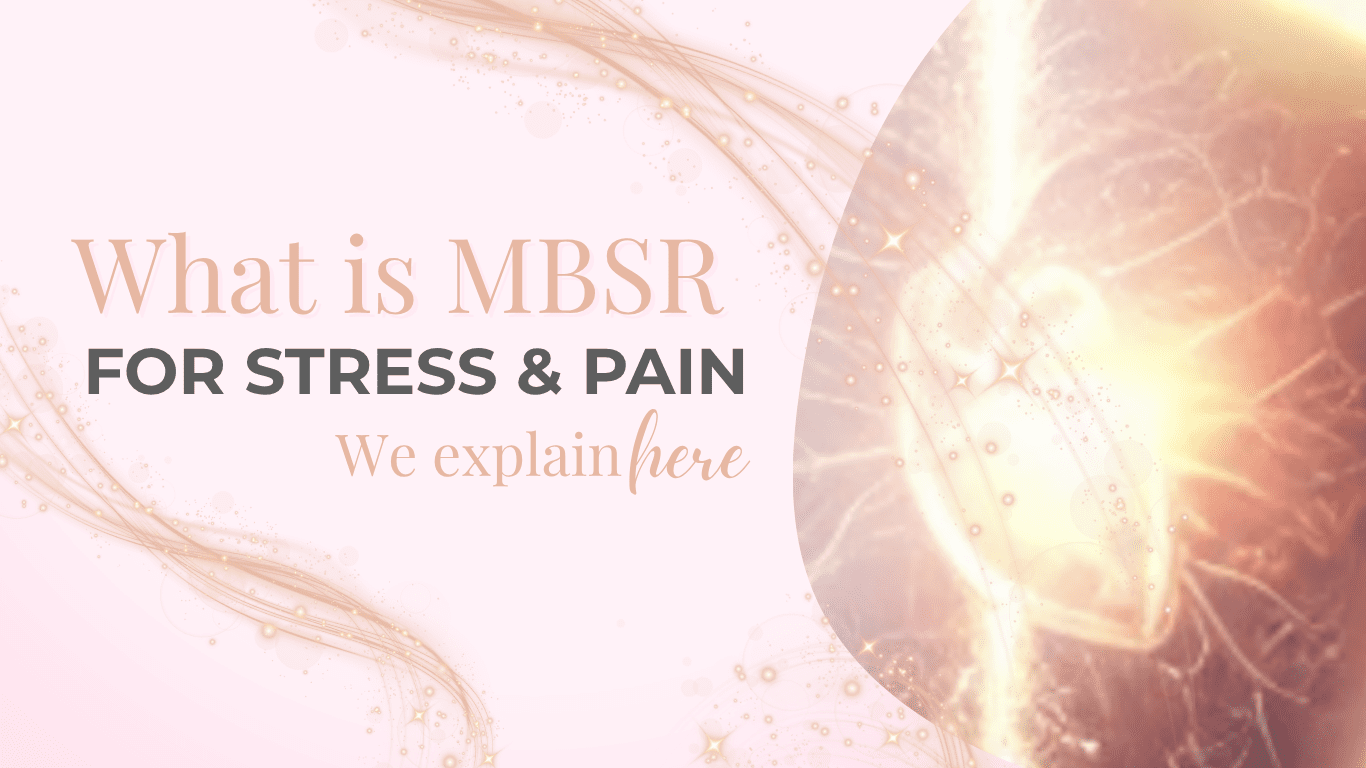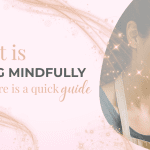Chronic Pain, Stress, and the Search for Relief
Chronic pain can be all-consuming—not just physically, but emotionally and mentally, too. If you’ve been longing for a gentler, more natural approach to managing it, mindfulness-based stress reduction might be exactly what you need.
What Is Mindfulness-Based Stress Reduction (MBSR) isn’t some quick-fix miracle cure. It’s a research-backed approach that teaches you to meet pain—and stress—with awareness, patience, and acceptance. Developed by Dr. Jon Kabat-Zinn, MBSR blends mindfulness meditation, gentle movement, and practical awareness techniques to help reduce pain, stress, and emotional suffering.
Here, we’ll explore what mindfulness-based stress reduction is, how it works, and how it might help you manage pain in a kinder, more sustainable way.
What Is Mindfulness-Based Stress Reduction (MBSR)?
MBSR is an 8-week structured programme that helps you respond to stress, anxiety, and chronic pain through mindfulness practices. Rather than battling to get rid of pain completely, it helps you change how you relate to it.
- Developed in the 1970s by Dr. Jon Kabat-Zinn at the University of Massachusetts Medical School
- Uses mindfulness meditation to cultivate present-moment, non-judgemental awareness
- Includes gentle movement like yoga and mindful breathing to help ease tension
- Backed by research showing MBSR can significantly reduce chronic pain and improve quality of life
It’s not about ignoring the pain or putting on a brave face—it’s about meeting what’s here with as much calm and curiosity as you can muster (and let’s be honest, some days that’s easier than others!).
How Does MBSR Help with Pain?
Let’s be clear: MBSR doesn’t wave away pain like magic. But it can change how your brain and body experience it, lowering suffering and emotional overwhelm.
- Reduces Pain Sensitivity
Mindfulness practice has been shown to change how the brain processes pain signals, often making pain feel less intense. - Calms the Nervous System
Breathing techniques and meditation help lower stress hormones that can ramp up pain levels. - Builds Emotional Resilience
Supports you in managing the frustration, fear, and anxiety that often accompany chronic pain. - Encourages Acceptance
Helps shift from resisting pain (which is exhausting) to accepting and working with it, reducing its emotional weight.
It’s a bit like learning to stop wrestling with a difficult houseguest and offering them a cup of tea instead.
3 Simple MBSR Techniques for Pain Relief
You don’t need to sign up for a full programme to start. Here are three practical mindfulness-based stress reduction techniques you can try today.
1. Body Scan Meditation
- Best for: Relaxing tight muscles and improving body awareness.
- How to do it:
- Lie down or sit comfortably and close your eyes.
- Focus on your breath for a moment.
- Gently move your attention through your body—starting at your toes, moving up to your legs, torso, arms, and head.
- Notice areas of pain or tension without trying to fix them. Just observe with curiosity.
- Why it helps: Builds a mind-body connection so you can notice pain without spiralling into stress or judgement.
2. Mindful Breathing for Stress Reduction
- Best for: Calming the nervous system and lowering stress.
- How to do it:
- Inhale slowly through your nose for 4 seconds.
- Hold for 4 seconds.
- Exhale gently through your mouth for 6 seconds.
- Repeat for 1–2 minutes, focusing only on your breath.
- Why it helps: Activates the parasympathetic nervous system, lowering stress hormones and easing tension that can make pain worse.
3. Observing Pain Without Judgement
- Best for: Changing how you mentally process pain.
- How to do it:
- When you notice pain, pause.
- Observe it: Is it sharp? Dull? Throbbing? Be curious.
- Instead of resisting, imagine breathing into the sensation, softening around it.
- Why it helps: Moves you from fighting pain to observing it, reducing fear and emotional distress.
Kindful Last Thoughts
Mindfulness-based stress reduction isn’t about ignoring pain or pretending it’s not there. It’s about changing the relationship you have with it—one breath, one moment at a time.
If you’re looking for a gentle, research-backed approach to managing chronic pain, stress, and emotional overwhelm, mindfulness-based stress reduction offers practical tools to help you feel more in control, more resilient, and just a little bit kinder to yourself.
Start small. Stay curious. And remember—no perfection required. Every mindful moment counts.
My Approach and Training
While MBSR is a highly respected and popular mindfulness programme, there are other approaches that are equally powerful and beautifully designed. I chose to train with Breathworks because I truly love their gentle, kindful way of teaching. Their approach is interactive, creative, and grounded in years of experience helping people apply mindfulness to real life—especially during times of stress and pain.
This is the style I bring to my own courses and sessions. I aim to share mindfulness in an accessible, compassionate way that meets you where you are, and helps you build a practice you can really live, not just learn. If you’re looking for a supportive, down-to-earth way to explore mindfulness, I’d love to help you get started.
Your Free KindfulnessToolkit for Calmer, Happier Days
If you’re ready for a quick, gentle way to feel calmer, brighter, and more like yourself again, the free Kindfully Calm Toolkit is for you. Inside you’ll find easy, no-fuss tools you can use in minutes to shift your mood, relax your body, and bring happier vibes to even the busiest day.
Don’t wait to feel better. Download here it now and give yourself the gift of calm and ease today.
For further reading What is Living Mindfully




